Bedroom zoning with curtains: features and interesting options

Space zoning is often used for both large and small rooms. There are many ways to divide a room into zones. One of the most interesting and simple options is the use of curtains. Features of bedroom zoning with curtains will be discussed in more detail in this article.
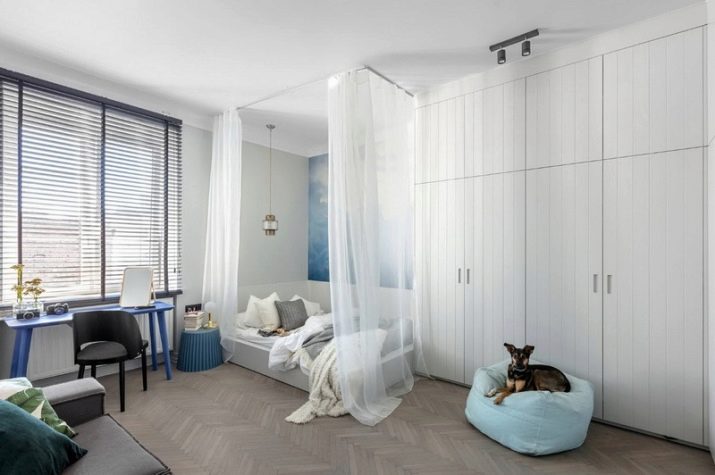
What is it for?
Bedroom zoning is usually used when it is necessary to make a large room more comfortable, or, conversely, a small room - more functional and visually larger. Division into zones is relevant in apartments where large families live. And also this technique can be used simply to make the interior more interesting.
In the children's bedroom, it will be useful to highlight areas for study, play and relaxation. As for the room for adults, it may require a work space, especially if the apartment is small and does not have a separate office. And also with the help of curtains you can make a dressing room in the bedroom.
Quite often, in one-room apartments, with the help of curtains, two zones are distinguished in the room: the bedroom and the living room. In this case, the free space in the room will not be affected.
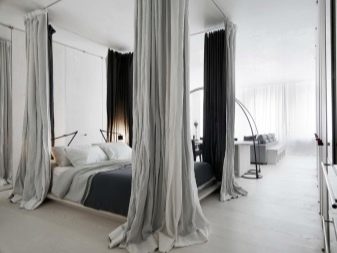
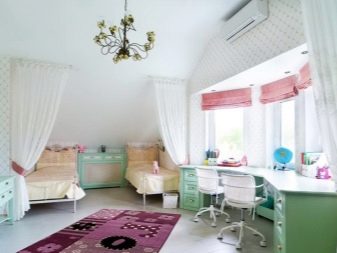

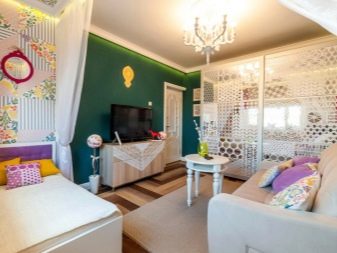
Advantages and disadvantages
Dividing a room into zones can be done in different ways. Comparing the use of curtains with the use of other types of partitions, a number of advantages can be highlighted.
- To divide the bedroom with curtains, it does not take a lot of effort and financial investment. Curtains are not an expensive material, and besides them, you only need to purchase fasteners.
- There is no need for complicated renovation work to place the curtains. It will be enough just to attach the cornice to the right place.
- Now you can find a huge number of curtains of various types, materials, styles and colors. In addition, you can order the production of curtains according to your sketches, or sew them yourself.
- The curtains are lightweight and do not take up much space, which is especially convenient for zoning a small bedroom.
- If necessary, the curtains can be easily changed to others or removed altogether.
- Curtains allow not only to effectively divide the space, but also to hide some defects in the decoration of the room.
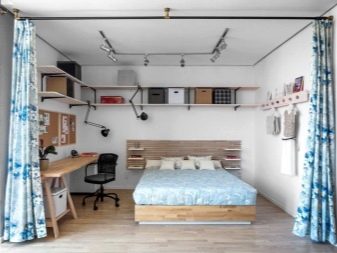
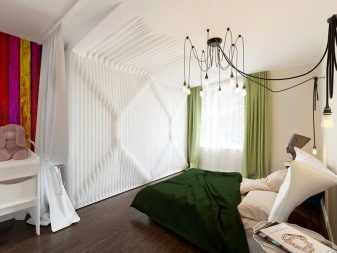
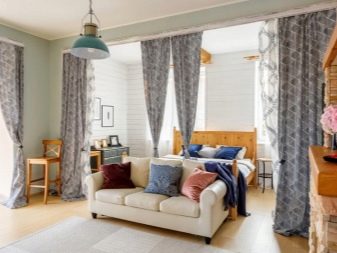
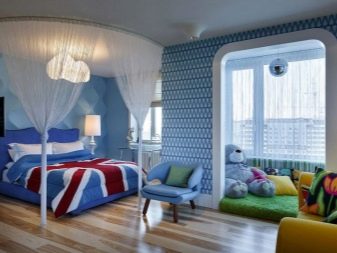
In addition to its many advantages, curtains also have their disadvantages. Let's highlight the main disadvantages of using curtains as partitions.
- Curtains cannot be used as sound insulating material.
- The fabric tends to accumulate dust in itself and get dirty rather quickly. Curtains will require periodic maintenance and washing.
- Curtains are not reliable and durable. Small children or pets can easily spoil them.
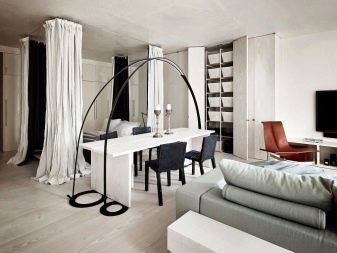
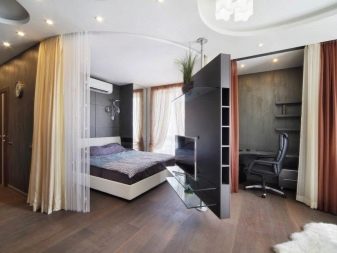
Having analyzed all the pros and cons of using curtains for zoning space, you can decide whether this method is suitable in a particular case. Instead of curtains, you can use other types of partitions, or combine them in one room.
Methods for dividing into zones
You can divide the space into separate zones using curtains in two different ways: frame and suspended. The first method is more laborious, since it requires the manufacture of a solid structure that will play the role of a frame. Frame sizes can be very different. By type, stationary and portable frames are distinguished, as well as solid and sectional.
Another option for dividing into zones is conventional suspended structures in the form of cornices. Such elements can be mounted on the wall or on the ceiling itself. This option is the simplest, since it does not require much effort - you just need to install the cornice and hang the curtains.
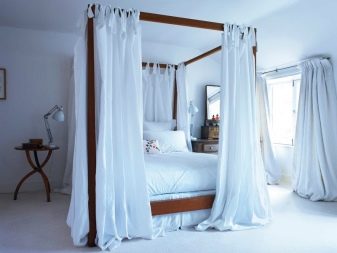
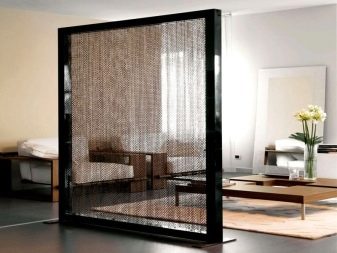
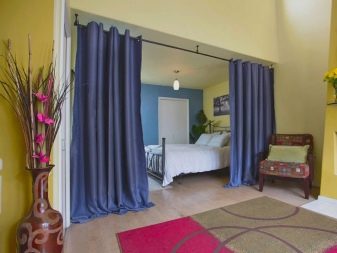
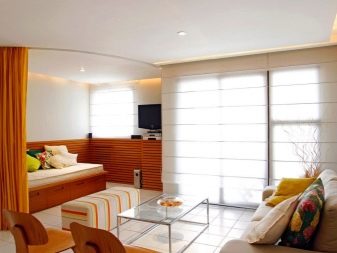
Types of curtains
Not all types of curtains may be suitable for zoning the space in the bedroom. Most often, several types of curtains are used.
- Classic fabric curtains. To divide the space into functional areas, it is best to use curtains made of dense and heavy fabric. If the purpose of zoning is to decorate the room, then it is better to give preference to light and translucent options.
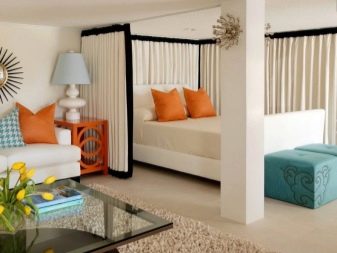
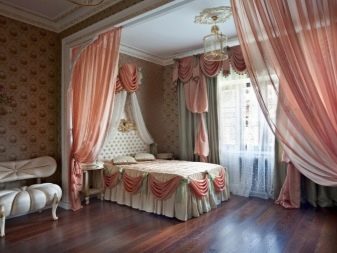
- Japanese curtains are several panels of fabric that can freely move along the cornice using movable guides. The canvases, in turn, should be straight and without folds. Outwardly, such curtains resemble solid partitions made of solid materials.
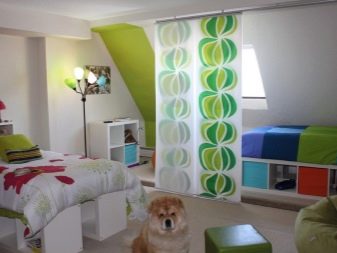
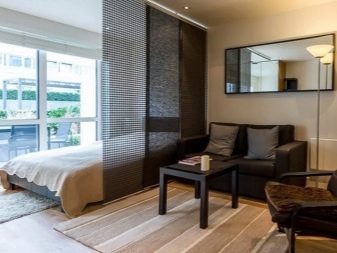
- Thread curtains look easy in the interior. They transmit light well and can create unusual visual effects. Such curtains will not completely cover the separated space, so it is convenient to use them in the bedroom of adults, where you need to fence off a sleeping place for a small child.
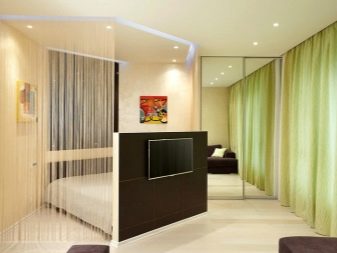
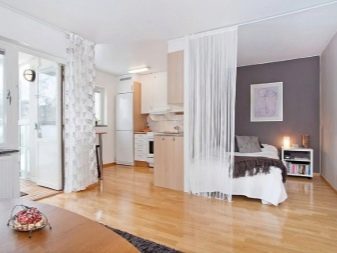


- Vertical blinds are another option for a lightweight partition. If necessary, the divided zones can be simply combined into one, since in the folded state such blinds are practically invisible.
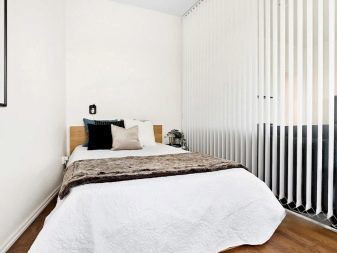
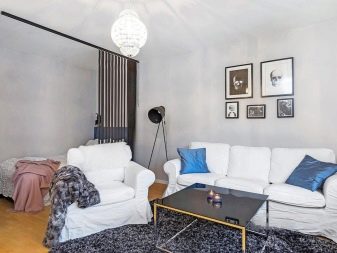
When choosing curtains, you need to pay attention not only to their type, but also to the material from which they are made. The best fabrics for zoning are:
- linen;
- tulle;
- organza;
- silk;
- cotton;
- jacquard.



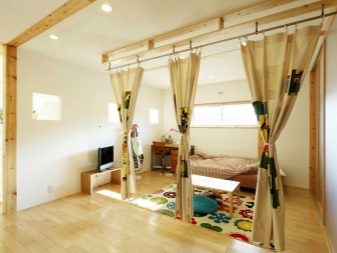
If not ready-made curtains are purchased, but fabric for sewing them, then it is best to take cuts from one roll or batch. The fact is that in different rolls the material may differ in quality and shade.
How to fit the partition into the interior?
When zoning, it is important not only to correctly divide the space in the room, but also to correctly fit the curtains into the interior. Thanks to the huge selection of curtains, choosing the right option will not be so difficult. First of all, you need to consider the style of interior design.
- For American style, curtains made from natural fabrics are best suited. The presence of geometric patterns on the canvases is allowed.
- A universal option for almost all style directions are curtains in red-brown, beige and gray shades.
- For rustic interiors, folded curtains made from natural materials are well suited, which are best hung on a wooden curtain rod.
- In a loft-style bedroom, plain vertical blinds will look good.

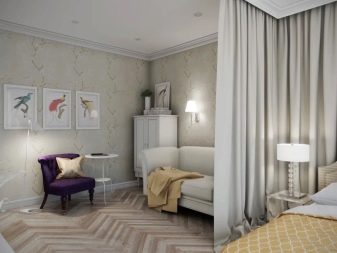
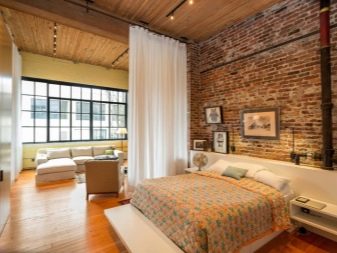
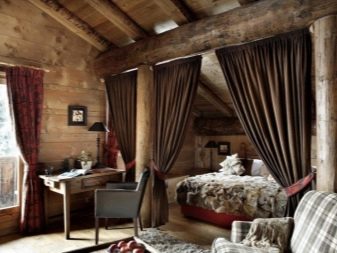
In addition, it is necessary to take into account the purpose of the zone to be separated. For a dressing room, dark curtains made of thick fabric would be a suitable option. The workspace is best organized near a window. To highlight the area, straight curtains are suitable. Filament curtains can be used here to make it easier for light to pass into the work area.
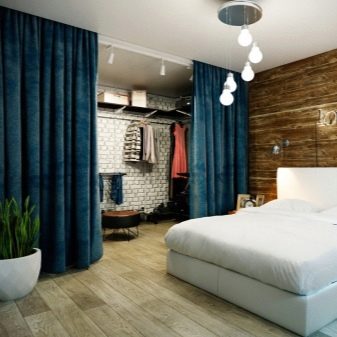
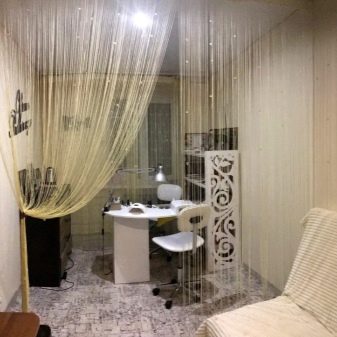
It is better to highlight the child's sleeping place with the help of light curtains of dim colors. Preference should be given to transparent or translucent light fabrics. You can separate the sleeping place for adults with both light tulle and blackout curtains.
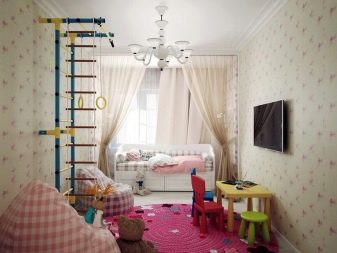
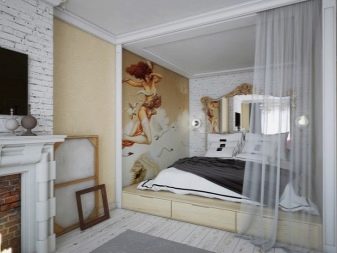
Curtains can either be in harmony with the interior of the room, or act as a bright accent. If the decoration of the room is distinguished by a rich color scheme and an abundance of various patterns and patterns, then it is better to use plain curtains in calm tones. If the design is made in warm shades, then the use of bright curtains will be appropriate.
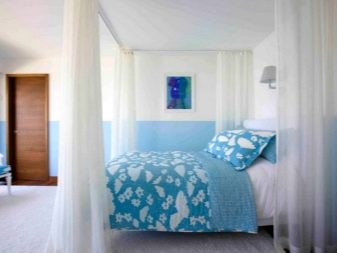
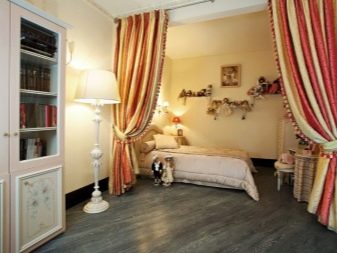
When dividing the bedroom into only two different zones, it is recommended to use plain curtains or with a slight pattern. To visually enlarge a small room, light partitions of light shades are suitable.
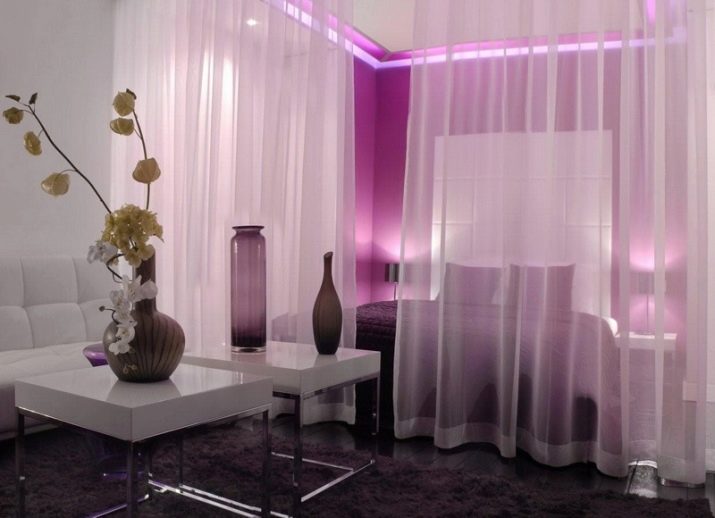
And also it is worth remembering that, regardless of the type of curtains, they should be in size almost to the floor. Otherwise, zoning will be considered ineffective.
Successful examples
Highlighting the sleeping area with dense jacquard curtains with a large pattern. The color scheme of the curtains is in good harmony with the floor, sofa and decor elements. This creates a contrast with the white bed.

A sleeping place can also be distinguished with the help of light transparent curtains. Light thin fabric fits perfectly into a modern bedroom interior.
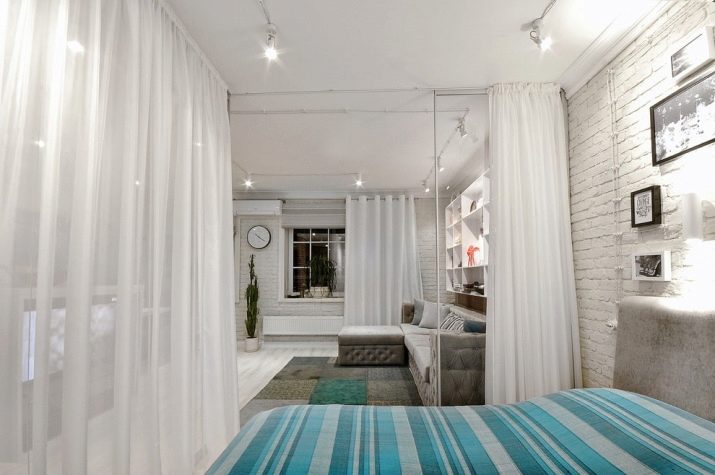
Organza curtains work well for zoning in a children's bedroom. For children, the most suitable option would be light and dim shades of the partition.
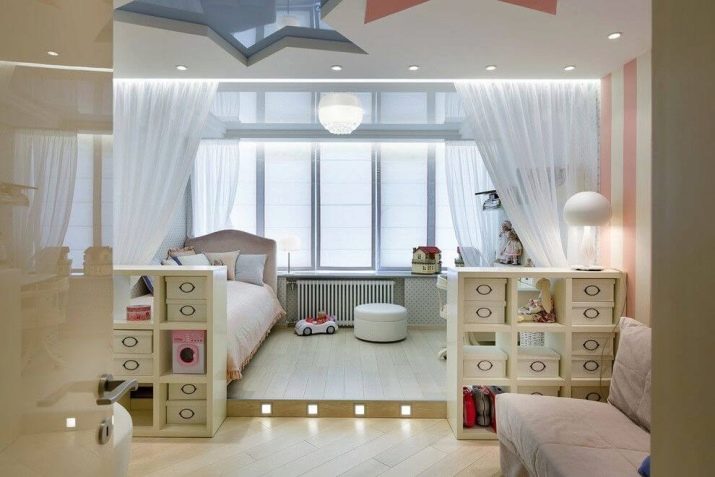
Thick plain curtains divide the room into a working and sleeping area. The curtain is matched to the walls and ceiling, and suspensions in the form of large metal rings highlight the partition in the interior.
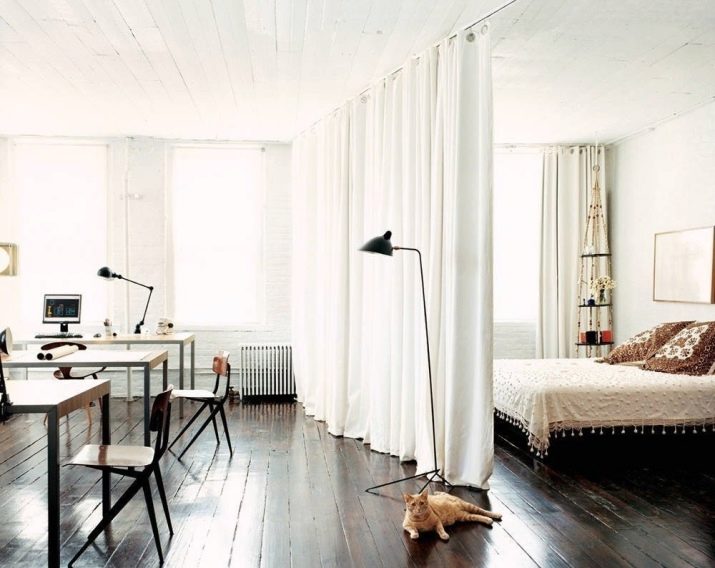
For information on how to sew a curtain for zoning space, see the next video.








